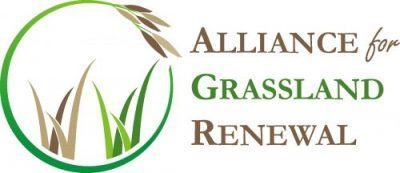As I continue to develop my skills as an adaptive grazier, I find that I am more tuned in to what is going on and I am making better and quicker decisions regarding pasture allocation and animal management. One of the goals of the Amazing Grazing Program is to get farmers to think about their farm more as an integrated system, rather than just focusing on the parts. This takes a special talent, but it is worth developing as there are too many little details that need attention to think about them independently.

We know that everything we do adds up and has collateral impacts across the system. This is called “Compounding” and it is a key to adaptive management. An example would be how doing a good job of grazing management increases soil organic matter, nutrient cycling and soil health. As time goes on, pastures with improved soil health will absorb more rainfall, will cycle more nitrogen and other critical nutrients, and grow more grass.
When you walk into your pastures, you need to be seeing all the components and how they are fitting together without actually focusing on any of the details. That sounds a little “out there”, but that way of looking at the world is really what makes the management of these systems come together. Once I was on a trip to the University of Georgia with our group of farmers working on a Conservation Innovation Grant project. We spent most of the first day in a meeting room going over results of on-farm demonstrations with nutrient distribution, nitrogen application, and soil health benefits of improved grazing management.
During one of our breaks, I was outside in the yard walking with Mike Jones from Surry County, NC, and we were looking for some nimblewill to show one of the other participants that was not sure they could identify that grassy pest. We didn’t find a single plant of nimblewill, but there was a pretty good stand of white clover mixed in with the bermudagrass lawn. I asked Mike if he could find four-leaf clovers, and he said he did, but rarely. I said I could find them almost anywhere there was white clover in just a few minutes. He was a little skeptical, but within about 60 seconds I found one. He asked “how did you do that” and my answer was that I didn’t “look” at the individual leaves, but rather I just scanned the area and “saw” one.
When I was a kid, I was amazed at how my dad could find four-leaf clovers. It was very frustrating for me, and every time he would find one right under my feet, I would spend hours crawling around looking in that area with no luck. Dad would happen on by where I was looking and would reach right down near me and say “what’s wrong son, there is one right here”! I grew up like that and rarely ever found a four-leaf clover. They actually occur at a rate of about 1 in 10,000, so there are a whole lot of them in an acre…the trick is to actually see one in a sea of the three-leafed kind. It takes a really long time to look individually at 10,000 clover leafs!
Later, when I was farming and in school, things changed for me dramatically. One day I was walking in a fescue/clover pasture and I was just glancing over the sward when a four-leaf clover nearly jumped out at me. I picked it and put it in my wallet as my dad always did (for good luck), and as I put my wallet back in my pocket my eye found another. I figured I had hit a gold mine, so I started looking for yet another…..and I spent quite a bit of time with no luck. I quit looking and went on about my business, but as I started walking another jumped out at me. So, what had happened? All those years as a kid I trained my eye to see a four-leaf clover. I found few, but I spent so much time doing it that I just stored that shape in my brain. Eventually, I went on autopilot and could see a four-leaf clover without intentionally looking for one.
The trick is not to focus on the details, but rather to look at the whole field of view and let your brain subconsciously pick up on that special shape. So, what does that have to do with Pasture Ecology?
Focusing on the system as a whole rather than the individual parts is a key management skill most graziers will develop. Keeping an eye on cow body condition, gut fill, animal behavior, pasture condition, residual forage, forage quality and all the other aspects of the system is critical, but the best way to do it is without actually having to look at them individually. As you advance your skills as a grazier, you will be challenged with all the details you have to think about. Some get bogged down in all that detail and give up; after all it is a very complex system. You might also miss some detail because you were so busy looking at other details. Once you start to see and think about the system as a whole, then the parts that need your attention and their interrelationships become something you see automatically in a matter of seconds. If something is wrong or needs attention, it will jump out at you. To learn more about managing a pasture as an ecological system, attend as many Amazing Grazing workshops and other educational events as you can, and make an effort to train your eye in preparation for that day you start to find four-leaf clovers without looking for them!
